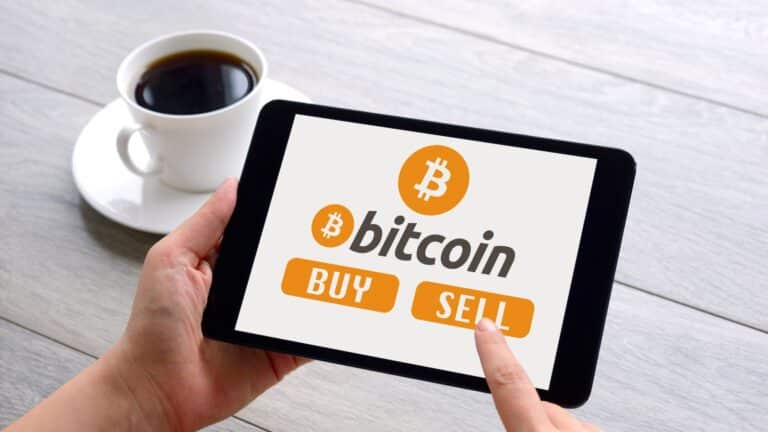Bitcoin is a digital asset with real-world value—a concept that can seem unusual at first. With no physical form, no ties to government, and no physical uses like precious metals, Bitcoin’s value might appear puzzling. Yet, this cryptocurrency has grown to a market cap exceeding $3 trillion (as of November 2024), positioning it as a significant player in finance and sparking the question: Why does Bitcoin have value?
In this article, we’ll break down the main factors that give Bitcoin its worth, from scarcity to market sentiment and utility. For newcomers and enthusiasts alike, understanding these factors can shed light on Bitcoin’s appeal as a unique asset class.
Quick Takeaways:
- Bitcoin’s fixed supply cap of 21 million creates scarcity, driving its value.
- Demand and market sentiment play a significant role, influenced by media, regulations, and economic factors.
- Bitcoin is a globally accepted medium of exchange and is viewed by many as a store of value, often compared to digital gold.
- Technological advancements, regulatory changes, and competition from other cryptocurrencies also impact Bitcoin’s value over time.
The Basics of Bitcoin and Value
Understanding Bitcoin’s Origins
Bitcoin emerged from the 2008 financial crisis – a time when trust in traditional banks was at a low. In October 2008, an anonymous figure or group known as Satoshi Nakamoto published the Bitcoin whitepaper, outlining a decentralized digital currency that could operate without reliance on any central authority. On January 3, 2009, the first Bitcoin block, known as the “genesis block,” was mined, marking the birth of the Bitcoin network.
Bitcoin’s value initially grew through its small community of cryptography enthusiasts, and its first real-world use came in 2010 when 10,000 BTC were traded for two pizzas—a transaction now worth hundreds of millions of dollars. Bitcoin has since gained attention beyond niche circles, evolving into a recognized financial asset.
What Does “Value” Mean?
To understand why Bitcoin has value, it helps to distinguish between intrinsic and extrinsic value:
- Intrinsic value is based on an asset’s inherent characteristics, such as gold’s rarity and durability, which make it valuable in jewelry and electronics.
- Extrinsic value, or perceived value, comes from outside factors—society’s agreement on what something is worth. Traditional currency, for example, has value because we trust it for trade, despite not being backed by a physical asset.
Bitcoin’s value aligns more with extrinsic value, largely driven by supply, demand, and the unique qualities it brings as a digital asset.
Key Factors Driving Bitcoin’s Value
Limited Supply and Scarcity
One of the most significant factors that drive Bitcoin’s value is its limited supply. The Bitcoin protocol caps the total number of bitcoins that will ever exist at 21 million. This scarcity is often compared to gold, which is also finite. Once the last bitcoin is mined, no more can be created, making it a deflationary asset.
To maintain this scarcity, Bitcoin undergoes periodic halving events (approximately every four years), where the reward for mining new blocks is cut in half. These events slow the creation of new bitcoins and help create long-term scarcity, similar to how gold mining rates impact its availability.
Scarcity is a fundamental driver of value in economics. When demand for a scarce resource like Bitcoin increases, so does its price, as investors compete for a limited supply.
Demand and Market Sentiment
Bitcoin’s price is heavily influenced by market sentiment and demand. Events such as media coverage, economic downturns, or government regulations can drive investor sentiment, either boosting demand or triggering sell-offs.
For example, Bitcoin’s all-time high of $93,434 in November 2024 was fueled partly by positive media and high institutional interest. On the other hand, negative news—such as regulatory crackdowns—can reduce demand, leading to price drops.
Investor psychology also plays a role here. Market sentiment often reflects how investors feel about Bitcoin’s future. When demand for Bitcoin rises, prices increase, and during periods of lower demand or fear, the price can drop significantly. Bitcoin’s volatility is a byproduct of this demand fluctuation. A commonly used indicator of Bitcoin demand is the fear and greed index.
Bitcoin as a Medium of Exchange
One of Bitcoin’s primary uses is as a medium of exchange. Over the years, Bitcoin has gained acceptance worldwide, with thousands of merchants allowing payments in BTC. The rise in usage as digital cash has enhanced Bitcoin’s utility, adding to its value.
In addition to everyday purchases, Bitcoin is commonly used for cross-border payments and remittances due to its efficiency and relatively low fees. Unlike traditional banking systems, which involve intermediary fees, Bitcoin enables peer-to-peer transactions, making it an attractive option for those looking to avoid hefty transaction fees.
However, Bitcoin’s utility has limits. Issues like network congestion and slower transaction speeds can hinder its appeal as a payment method. Innovations such as the Lightning Network aim to improve Bitcoin’s scalability, helping to process transactions faster and at lower costs, which could increase its utility and thus its value over time.
Bitcoin as a Store of Value
Beyond being a digital currency, Bitcoin is increasingly viewed as a store of value, a role traditionally associated with gold. Bitcoin’s fixed supply and decentralized nature make it resistant to interference and manipulation, appealing to those who want to preserve wealth.
As inflation rises, some investors see Bitcoin as a hedge against economic instability, which has bolstered demand. Just as gold has been valued for its durability and resistance to economic fluctuations, Bitcoin’s limited supply and global acceptance position it as a modern-day store of wealth. People have compared Bitcoin vs Gold as inflation hedges for a long time.
Additional Influencing Factors
Technological Advancements
Technological improvements impact Bitcoin’s value, particularly as its ecosystem matures. For instance, scalability solutions like the Lightning Network enhance Bitcoin’s transaction speed, making it more practical as a payment method.
The continuous development in Bitcoin’s underlying technology also adds to its perceived stability and resilience. A network that has been secure and operational for over a decade inspires confidence in Bitcoin’s future.
Competition from Other Cryptocurrencies
While Bitcoin was the first cryptocurrency, the rise of altcoins such as Ethereum, Litecoin, and stablecoins has added competition to the market. Each alternative coin offers unique features, which sometimes attract different types of users.
Despite this competition, Bitcoin’s status as the original cryptocurrency and its strong market cap keep it at the top. Many investors see Bitcoin as the most secure and reliable choice, contributing to its continued dominance.
Regulatory Environment and Legal Status
The regulatory landscape significantly affects Bitcoin’s value. Favorable regulatory developments, such as the approval of Bitcoin exchange-traded funds (ETFs) or institutional interest, can boost Bitcoin’s legitimacy and demand. Conversely, restrictive regulations can create uncertainty, impacting Bitcoin’s appeal to investors.
The Role of Psychology and Social Factors
Trust in Decentralization and Blockchain Technology
Bitcoin’s decentralized network is a critical factor behind its value. Unlike traditional currencies, which rely on central banks, Bitcoin operates independently of any single authority, relying instead on a secure blockchain network verified by thousands of computers worldwide.
This decentralization has made Bitcoin attractive to users who prioritize transparency and distrust central institutions. The Bitcoin blockchain, which records all transactions publicly, is widely trusted for its security and integrity.
Network Effects and Community Support
Bitcoin’s value benefits from network effects: as more people use and support Bitcoin, it becomes more practical and widely accepted. A large user base also means higher liquidity, making Bitcoin more resilient to market fluctuations and boosting its value over time.
Bitcoin’s community of developers, enthusiasts, and investors creates a reinforcing cycle: the more people invest in and support Bitcoin, the more valuable and widely used it becomes.
Bitcoin’s Volatility and Speculative Value
Bitcoin’s volatility is often seen as a double-edged sword. While price swings can present risks, they also attract speculative investors looking for quick returns. These speculative investments contribute to Bitcoin’s value by increasing demand.
This volatility also divides investors into two groups: “HODLers” (those who hold onto Bitcoin for the long term, believing in its future potential) and short-term traders who aim to profit from quick gains. Both groups impact Bitcoin’s market behavior and, ultimately, its value.
Common Criticisms and Debates Around Bitcoin’s Value
Environmental Concerns
Bitcoin’s Proof-of-Work mining model has been criticized for its high energy consumption, with estimates comparing its annual energy usage to that of a country the size of Chile. Solutions like energy-efficient mining hardware and increased use of renewable energy could address this environmental impact over time.
Comparisons to Traditional Assets
While Bitcoin lacks the stability of fiat currencies or traditional assets, its unique characteristics continue to draw interest. Despite its volatility and environmental impact, Bitcoin’s qualities—like scarcity, decentralization, and security—set it apart from traditional financial instruments, supporting its value.
Conclusion
Bitcoin’s value is derived from a unique combination of scarcity, demand, utility, and trust in its decentralized model. From its fixed supply and decentralized network to its growing role as both a medium of exchange and a store of value, Bitcoin presents a compelling alternative to traditional assets.
While Bitcoin’s future value depends on numerous factors, its journey so far has established it as a distinctive asset in the world of finance. For those interested in experiencing Bitcoin firsthand, consider visiting a RockItCoin ATM, where you can start buying Bitcoin with ease.
Ready to Get Started with Bitcoin?
If you’re curious to experience Bitcoin’s value firsthand, RockItCoin makes it easy to get started. With RockItCoin ATMs available across the country, buying Bitcoin is convenient and accessible, even for beginners. Our ATMs are designed for secure, quick transactions, letting you purchase Bitcoin on your terms. Whether you’re exploring Bitcoin as a store of value or simply want to start small, RockItCoin provides a simple and safe way to join the world of cryptocurrency. Visit a RockItCoin ATM near you or download our app today to start your Bitcoin journey.
Frequently Asked Questions (FAQs)
Why does Bitcoin have value?
Bitcoin has value due to its limited supply, high demand, and unique features as a decentralized digital currency. With only 21 million bitcoins ever created, scarcity drives its value, while market demand, technological advancements, and acceptance as a form of payment all contribute to its worth. Bitcoin’s decentralized nature also makes it appealing as a store of value and hedge against inflation.
How is Bitcoin different from traditional currency?
Bitcoin differs from traditional currency because it’s decentralized, meaning it isn’t controlled by any government or central bank. Instead, Bitcoin operates on a secure, public blockchain where all transactions are transparent and verifiable. Additionally, unlike fiat currency, Bitcoin’s supply is limited to 21 million coins, giving it a scarcity similar to that of precious metals like gold.
Can Bitcoin be used for everyday purchases?
Yes, Bitcoin can be used for a range of everyday purchases, from goods and services to cross-border payments. As Bitcoin’s popularity has grown, many businesses and merchants worldwide now accept it as a form of payment. However, network congestion and transaction times can affect its practicality, which is why many users also view Bitcoin as a store of value.
Is Bitcoin safe to buy?
Bitcoin is secure when bought through reliable methods, such as reputable exchanges or RockItCoin ATMs. Transactions are verified on a secure, decentralized blockchain, which makes Bitcoin itself hard to manipulate. However, it’s important to use secure methods and protect personal information when buying, storing, or transferring Bitcoin.
Where can I buy Bitcoin?
You can buy Bitcoin easily at RockItCoin ATMs located across the United States. Our ATMs offer a fast and secure way to buy Bitcoin using cash or a debit card. You can also buy Bitcoin through our RockItCoin app, which allows you to manage your purchases and transfers directly from your phone. Visit our Bitcoin ATM map to find an ATM location near you!








